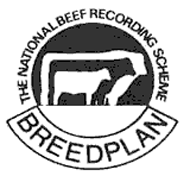
Maximising Benefits from Scanning for Carcase Traits in Seedstock Herds

When to Scan?
Scanning is an important part of the measurements some studs take for their BREEDPLAN genetic evaluation. Choosing the time to scan seedstock animals often involves compromises between:
- condition of stock — this should be the most important consideration;
- availability of scanners;
- cut-off dates for submission of data etc.
Season permitting, it is recommended that stock be scanned when they are in the best condition possible. This is particularly critical for marbling scanning (i.e. for ‘Intramuscular fat’, IMF). For optimal results with IMF scans, a minimum average rump fat depth of 4–5 mm is needed (this generally equates to 3–4 mm on the rib). If the stock are way below this condition, it is generally best to delay IMF scanning until they improve. If the situation is intermediate, and you are unsure of IMF scanning but intend to scan for ‘Eye Muscle Area’ (EMA) and ‘Fat Depth’ (FD), it is wise to ask the scanner to scan a few test animals for IMF and then to decide if it is worth continuing, or just to scan for EMA and FD.
While stock condition is critical for IMF scanning, it is not so critical for EMA and FD scans; however, it is still important for stock to have enough condition to allow genetic differences to show up. If all stock are, say, 0–2 mm fat depth, it may be wise to delay all scanning.
Balanced against the condition of stock, there will be factors affecting scanning time, such as:
- availability of scanners;
- desire to use the data for EBVs as well as raw scans for sales;
- cut-off dates for submitting data to breed societies. These dates often lead to incorrect decisions to scan out-of-condition cattle, for example in the false belief that this is the only way to get EBVs on individual sale bulls. These EBVs can usually be obtained by scanning cattle when they are in the best condition.
Which Animals to Scan, and At What Age?
The acceptable scanning age range is 300–800 days, but 400–600 days are generally preferred.
- Bulls are most commonly scanned, particularly to provide EBVs at sale as discussed above, and for selection decisions.
- Heifers and steers will provide very good information on their sires and other relatives.
- For marbling, heifer data is particularly useful, as heifers mature earlier.
The Scanning
BREEDPLAN and the breed societies will accept data only from accredited scanning technicians. You can obtain a list of accredited scanners from BREEDPLAN.
While scanning conditions vary, the following steps should generally be followed:
- For marbling (IMF) scans, cattle are generally clipped, warm oil should be used and at least three readings are needed on each beast. The average of these readings is submitted for analysis.
- Fat Depth (FD) and Eye Muscle Area (EMA) scans generally do not require animals to be clipped unless the coat is very long or dirty.
- Ensure any ‘management group’ information is also recorded on the recording sheets.
- It is strongly recommended, but not compulsory, to weigh the animal at scanning time.
Submitting the Data to BREEDPLAN
Submitting the data to BREEDPLAN is the breeder’s responsibility. Ensure data is sent:
- in the right format;
- with correct animal identifications;
- with management groups noted.
Pre-printed recording forms are available from BREEDPLAN, or the data can be submitted electronically from your PC using various herd recording packages. Note that the information compiled by the scanning contractor may not be in a suitable format for submitting directly to BREEDPLAN. It is the breeder’s responsibility to ensure that the information is complete, correct, and in the right format.
Further Information
- For information on Carcase EBVs, see Agnote DAI-269 Carcase EBVs (Version 4.2).
- Other Agnotes on BREEDPLAN are available.
- Further information can be obtained from your BREEDPLAN processor (phone (02) 6773 3555) or from the relevant breed society.
About the Author
Brian Sundstrom is Cattle Breeding Coordinator with NSW Agriculture. Part of this role involves technical specialist and advisory work with BREEDPLAN from an office at the Agricultural Business Research Institute (ABRI) at Armidale. His other role is with the Beef CRC group.

